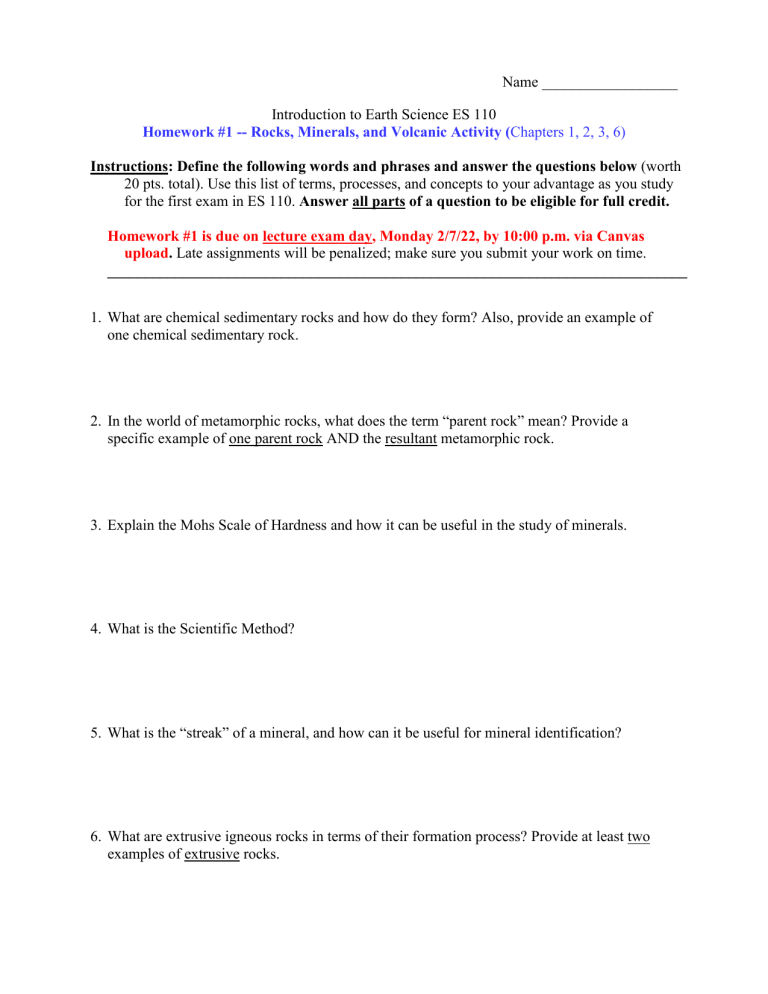
Name __________________ Introduction to Earth Science ES 110 Homework #1 -- Rocks, Minerals, and Volcanic Activity (Chapters 1, 2, 3, 6) Instructions: Define the following words and phrases and answer the questions below (worth 20 pts. total). Use this list of terms, processes, and concepts to your advantage as you study for the first exam in ES 110. Answer all parts of a question to be eligible for full credit. Homework #1 is due on lecture exam day, Monday 2/7/22, by 10:00 p.m. via Canvas upload. Late assignments will be penalized; make sure you submit your work on time. _____________________________________________________________________________ 1. What are chemical sedimentary rocks and how do they form? Also, provide an example of one chemical sedimentary rock. 2. In the world of metamorphic rocks, what does the term “parent rock” mean? Provide a specific example of one parent rock AND the resultant metamorphic rock. 3. Explain the Mohs Scale of Hardness and how it can be useful in the study of minerals. 4. What is the Scientific Method? 5. What is the “streak” of a mineral, and how can it be useful for mineral identification? 6. What are extrusive igneous rocks in terms of their formation process? Provide at least two examples of extrusive rocks. 7. What is a cinder cone? Describe the formation process of this volcanic landform. 8. How do detrital sedimentary rocks form? Provide an example of this type of sedimentary rock. 9. Define: Scientific hypothesis - 10. Explain the Bowen’s Reaction Series - 11. What is magmatic differentiation? 12. Cleavage and fracture of a mineral (define both terms): 13. Define: Scientific theory - 14. What are pyroclastic materials/deposits? Provide some examples. 15. Describe what shield volcanoes look like compared to the other types of volcanoes we have studied, and also explain how they form in order to create on this particular shape. 16. What is a lahar? How do they typically form? 17. What is the difference between a volcanic crater and a caldera? Define each term. 18. Porphyritic rock texture -- how does this rock texture form and what does it look like? 19. What does a composite volcano look like in terms of its size/shape? Compare this volcano to the other two types of volcanoes we have studied. 20. What are the five individual components to the definition of a mineral? a) b) c) d) e)




